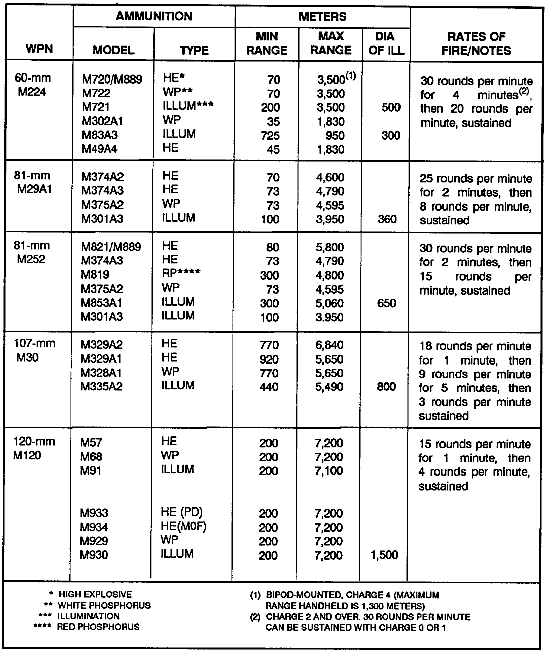The 60-mm mortar, M224, provides air assault, airborne, ranger, and light infantry rifle companies with an effective, efficient, and flexible weapon. The inherent limitations of a light mortar (short-range and small-explosive charge) can be minimized by careful planning and a thorough knowledge of its capabilities. The M224 can be employed in several different configurations. The lightest weighs about 18 pounds; the heaviest weighs about 45 pounds. Each round weighs about 4 pounds. Medium mortars
The 81-mm mortars, M29A1 and M252, are the current US medium mortars. The M252 is replacing the M29A1, but both will remain in the Army inventory for several years. Medium mortars offer a compromise between the light and heavy mortars. Their range and explosive power is greater than the M224, yet they are still light enough to be man-packed over long distances. The M29A1 weighs about 98 pounds. The M252 is slightly lighter, about 93 pounds. Both can be broken down into several smaller loads for easier carrying. Rounds for these mortars weigh about 15 pounds each. Heavy mortars
The 107-mm mortar, M30, and the 120-mm mortar, M120, are the current US heavy mortars. The M120 is replacing the M30, but both will remain in the US inventory for several years. The M30 is a rifled mortar, stabilizing its projectile by spinning it rapidly. The M120, like all other US mortars, fires fin-stabilized ammunition from a smooth bore. Although heavy mortars require trucks or tracked mortar carriers to move them, they are still much lighter than field artillery pieces. They outrange light and medium mortars, and their explosive power is much greater. The M30 weighs about 675 pounds. The M120 is much lighter at about 320 pounds. Rounds for the 107-mm mortar weigh about 28 pounds. Those for the 120-mm mortar weigh almost 33 pounds each.



